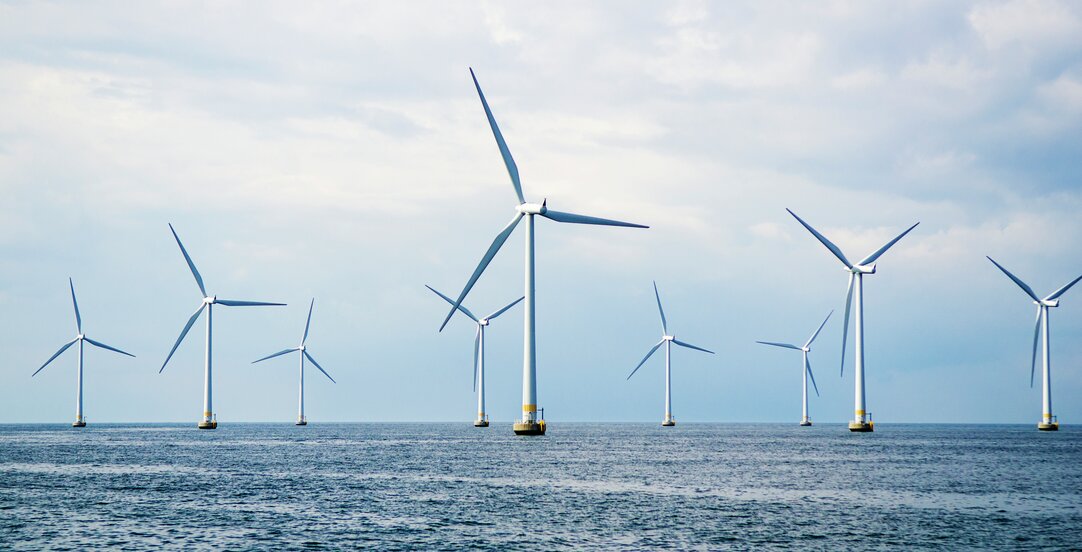State Aid for Offshore Wind

There is no doubt that offshore wind needs considerable public support in order to be financially viable. However, such support must first pass the threshold of EEA state aid law. How can state aid for offshore wind be granted legally, and what sources of state aid are available in Norway and the EU?
Reading time 5 minutes
State aid is granted when economic advantages from public funds accrue to certain undertakings that are liable to distort competition and trade in the EEA. State aid is at the outset prohibited. However, there are wide reaching exceptions in order to rectify market failures. These clearly apply to state aid for renewable energy, which comprises offshore wind.
State aid for renewables can be found legal in accordance with guidelines published by the EFTA Surveillance Authority (ESA) and the EU Commission, and under the so-called Block Exemption Regulation. State aid can be granted as support for both investments and running operations.
The overall condition for state aid to be found legal is that the aid must facilitate the development of renewable energy production without adversely affecting trade and competition. Aid must incentivise projects that would not have taken place, or would have taken place in a less environmentally friendly manner, without public funding. Furthermore, the aid amount must be limited to the minimum necessary to incentivise the project.
As of January 2022, the current Guidelines on state aid for environmental protection and energy (the “EEAG”) will be replaced by the Climate, Energy and Environmental Aid Guidelines (“CEEAG”). Certain novel conditions will be introduced, which will set the course for future aid schemes for offshore wind. The most important conditions include that:
- State aid measures must, at the outset, be technology neutral. It is possible to limit aid schemes to offshore wind, but the granting authority must provide justification acceptable to ESA or the EU Commission
- Aid should in general be granted through a competitive bidding process
State aid for offshore wind in the EU
An array of European states grant financial support to offshore wind energy technology and production. For example, Germany, the UK and France have granted aid for several individual plants, in addition to having vast schemes with available state aid in place. Some schemes comprise all renewable energy production, while others are directed to offshore wind in particular.
Operating aid is the most common. This takes several forms, that are often designed along the following lines:
- Feed-in tariffs (FiTs); all electricity produced is collected by an independent entity, which places it in the market. Producers are guaranteed certain prices
- Feed-in premiums (FiPs); electricity producers sell their electricity directly on the power market, for which they get the electricity market price and a premium (fixed or variable) as a support element on top of it
- Contracts for difference (CfDs); these entitle the electricity producer to a payment equal to the difference between a fixed ‘strike’ price, and a reference price per unit of output. Contracts for difference may also involve paybacks from beneficiaries to taxpayers or consumers, should the reference price exceed the strike price (called “two-way contracts for difference”)
The CEEAG clearly favours more market-integrated aid instruments that have less distortive effects on competition. CfD schemes are found best in that regard, while FIT schemes, considered the least favourable, are largely being phased out.
Neither FiTs, nor FiPs, are likely aid instruments in a possible future operating aid scheme in Norway.
State aid for offshore wind in Norway
At present, the ‘green certificate scheme’ represents a type of operating aid for renewable energy production, whereby producers obtain additional income from the sale of green certificates that energy suppliers are obliged to purchase. However, the scheme is being phased out – no new plants will receive green certificates after 31 December 2021. No offshore wind farms will make this deadline. It is unclear if the scheme will be replaced by other means of operating aid.
Investment aid, on the other hand, is granted by several sources that focus on different levels of technological maturity.
Aid for late-stage technology development and early market introduction can be granted by the Norwegian government enterprise Enova. Enova has financed offshore wind projects at different maturity levels, the biggest being Equinor’s Hywind Tampen project (88 MW). This consisted of a direct grant of NOK 2.3 billion for the realisation of Norway’s first floating offshore wind (FOW) farm. The wind farm will partially cover the energy needs of the Snorre and Gullfaks fields, and aims to facilitate the development of industrial solutions as well as drive down costs for the whole of the FOW industry.
Innovation Norway, a state-owned company and national development bank, is another entity with support-schemes in place. They can support research and development activities for less mature technologies within renewable energy, including offshore wind.
Lastly, the Research Council of Norway provides support for offshore wind technology in the earliest stages of research and development. In 2020, the Council established NorthWind, a research centre for both wind energy in general and offshore wind in particular, pairing research institutions and the industry.
Plans for state aid to future offshore wind parks in Norway
A June 2021 white paper published by Norway’s previous government, stated that bottom-fixed offshore wind projects in the Sørlige Nordsjø II area are expected to be developed on a commercial basis, without state aid. Meanwhile, large-scale FOW projects in the Utsira Nord area may obtain financial support from Enova.
The government also indicated that future FOW projects must have a considerable capacity (up to 200-500 MW) in order to contribute to further technology development. It is acknowledged that this will require state aid worth several billion NOK. The government will therefore consider increasing Enova’s budget when the allocation of concessions at Utsira Nord draws nearer.
Any new support programs from Enova will, at the outset, have to comply with the new CEEAG condition on technological neutrality. Should Enova wish to put in place programs specifically directed towards offshore wind, they will first have to convince ESA to approve this.
Norway’s new government took office in October 2021, and have declared an intention to facilitate offshore wind as part of their new policy (Hurdalsplattformen). It remains to be seen, however, whether they will choose a different approach to state aid.
